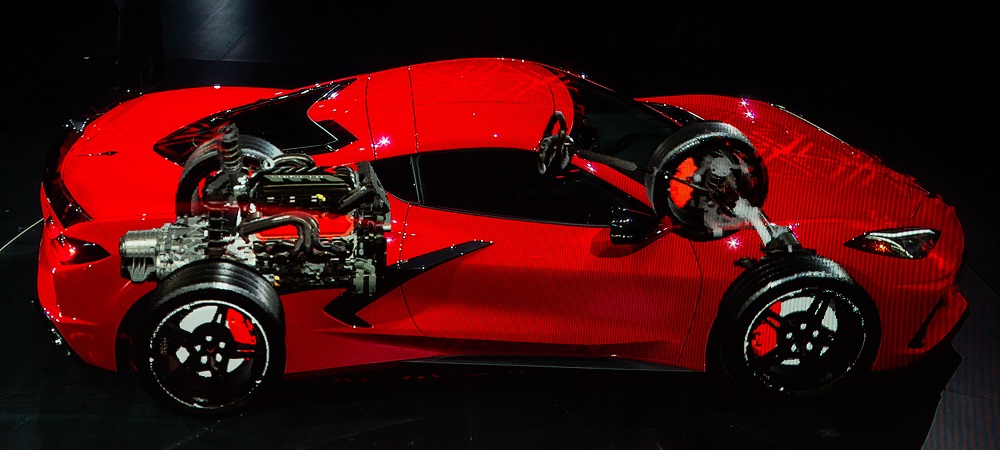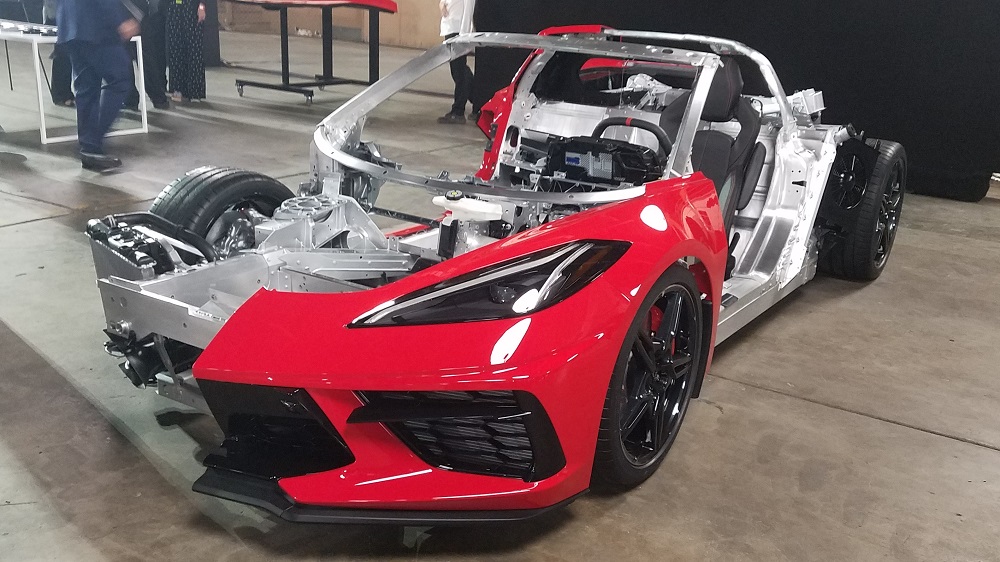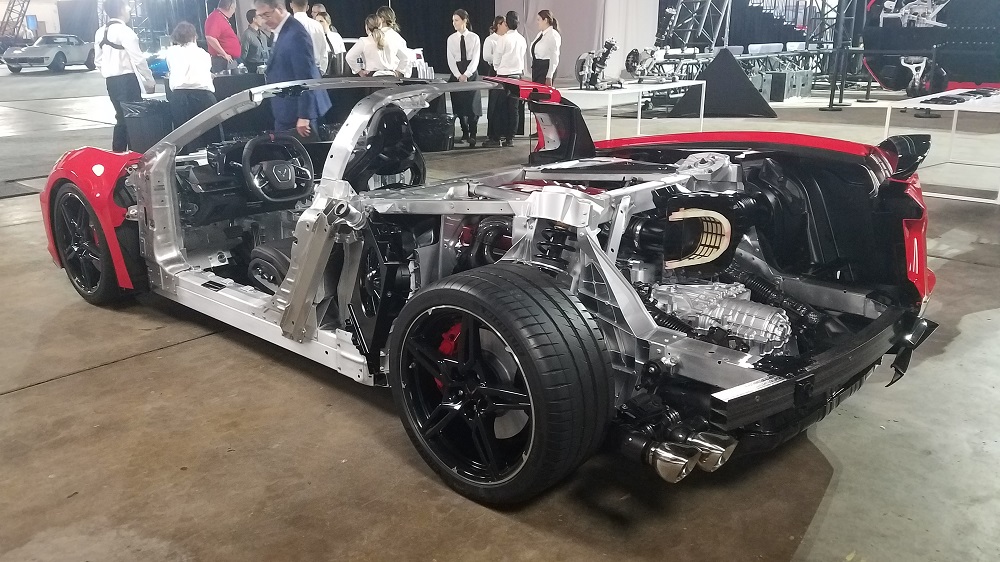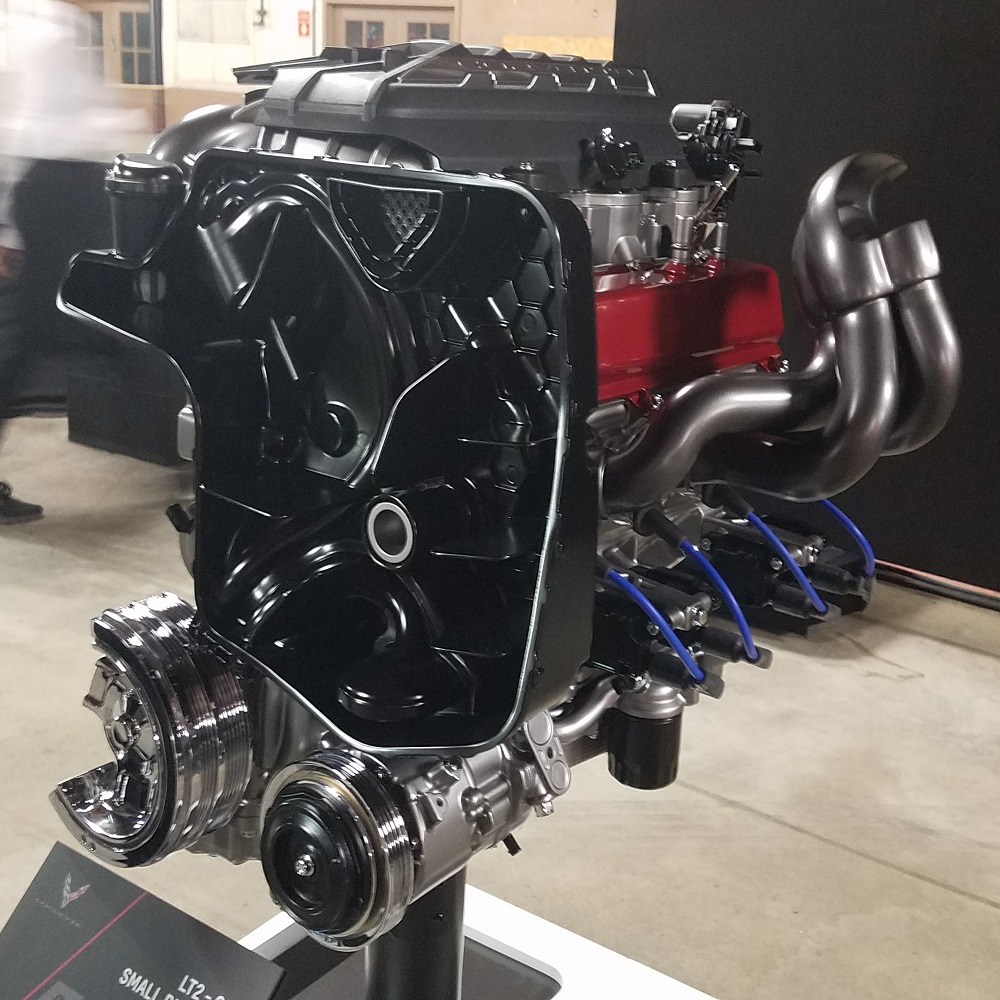2020 Corvette Features LT2 Pushrod V8 Engine: Is That the Right Move?
C8 Corvette finally makes the switch to a mid-engine layout, but hasn’t made the switch to a high RPM, dual overhead cam engine.
July 18 was a big day for Chevrolet, after all they finally unveiled the all-new, mid-engine 2020 C8 Corvette to the world. However, one thing that doesn’t seem quite so new is what’s in the engine bay. Dubbed LT2, it’s a 6.2-liter, naturally-aspirated V8 engine, with 11.5:1 compression and an overhead valve design. It produces 495 horsepower and 470 lb-ft of torque, when the optional performance exhaust system is specified.
If this sounds familiar, it should. LT2 is a direct evolution of the LT1 V8 currently featured in high-performance Chevrolet products. LT2 is considered to be part of the Gen V Small Block engine family, which includes LT1 (Corvette, Camaro SS), LT4 (Corvette Z06, Camaro ZL1) and LT5 (Corvette ZR1). It features technology we have come to expect, like direct fuel-injection and active fuel management (cylinder deactivation) for better cruising fuel economy.

It also features some new tech, and performance enhancements to make those improved power figures. The hardware should sound familiar to anyone here at LS1tech. Compared to LT1, LT2 has a more aggressive camshaft, and freer-flowing intake and exhaust manifolds. Those exhaust manifolds, in particular, look to rival any aftermarket long tube header setup, at least when we eyed it up. That explains the 30 horsepower bump over the LT1, but there’s something much more important than power that the LT2 has.
That feature is a very in-depth dry sump oiling system. Not only is the oil pan baffled, but this remote-mounted dry sump ensures that LT2 has a constant supply of oil pressure, even during sustained 1.0G cornering. Interestingly, the dry sump reservoir is actually bolted to the front of the engine, between the it and the firewall.

Why Does This Matter?
The decision to continue developing the pushrod V8, especially for Corvette, was a decision that dictated almost everything we know about the car.
Overhead valve engines are extremely compact, which helps when Chevrolet was trying to stuff it in the back of a Corvette. While General Motors has long toyed around with the idea of the mid-engine Corvette, it’s never gone beyond a concept, until now. Working with the small block Chevy V8 certainly reduced the complexity of producing a compact, reliable V8 engine that would fit in what is a relatively compact car.
While General Motors has continued to develop the small block Chevy to meet all of it’s performance requirements, many suspected that C8 would signal the switch to a dual overhead cam engine, like we briefly saw with the high-tech C4 Corvette ZR1. After all, GM developed the Blackwing V8 for Cadillac, which is a 4.2-liter twin-turbo DOHC engine. Coincidentally, this new LTA V8 engine is hand built in the Performance Build Center at General Motors’ Bowling Green facility, where Corvettes are made.
ALSO SEE: 2019 Corvette ZR1 Night Driving Cinematic
The highest performing variant of the LTA currently produce 550 horsepower and 627 lb-ft of torque in the now-dead Cadillac CT6-V (RIP). While that big torque hit down low is great for a luxury sedan, the LTA is a bespoke tune away from offering a more sports car-like power delivery, say 500 horsepower and 500 lb-ft for the base Corvette Stingray. Naturally, being turbocharged, GM planned for some “head room” in those power figures. Crank up the boost, and LTA, maybe dubbed LT6 or LT7 for Corvette use, could easily crank out around 700 horsepower in a high-performance Z06 model in the future.
This may sound like wishful thinking, but, maybe not. In any case, we are willing to guess that LT2 will be as reliable and infinitely tunable at the LT1 engine, which should suit us well. Now, we just need to drive it.




